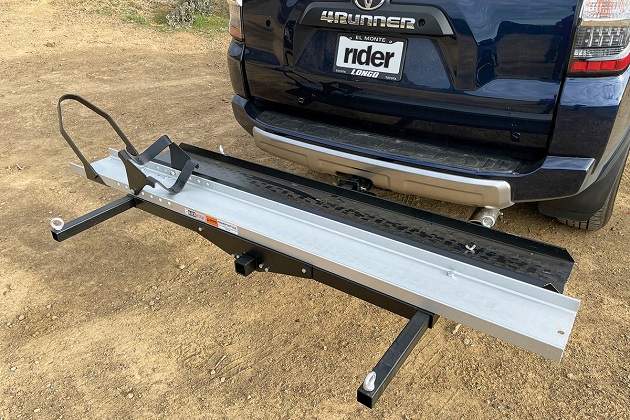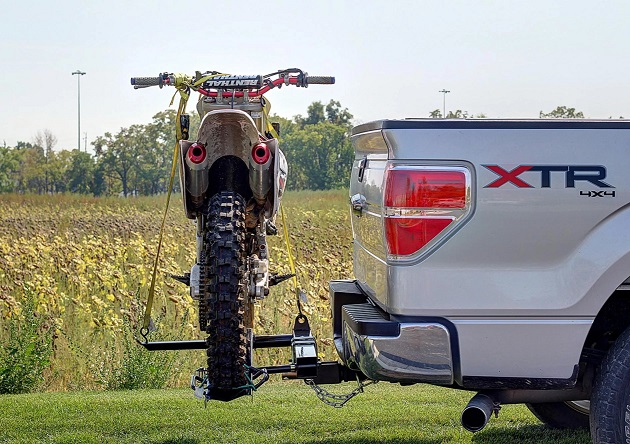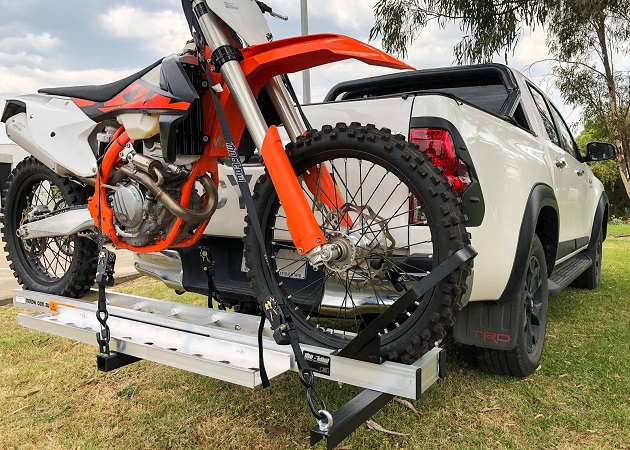Exploring Motorcycle Carriers: What’s the Best Way to Transport Your Ride?
Cruising down the road on your motorbike, ripping over jumps, and enjoying the wind in your hair sounds like a thrill. Well, it is, if you don’t have to struggle with getting your ride from point A to point B. When you are transporting your motorcycle, what you need is a safe, cost-effective, and simple solution. So what can you do to achieve just that? By finding the right carrier. To help you make the best decision, we will explore some common types and the factors you need to consider when purchasing one.
What Is a Motorcycle Carrier?

Motorbike carriers are devices designed to transport your ride from one location to another. They come in various forms and can be used for different purposes. Choosing the most suitable and resilient motorcycle carriers depends on various factors, including your specific needs and preferences. There are multiple choices to choose from, each having its own benefits and drawbacks.
Different Types of Motorcycle Carriers
Trailer Motorcycle Carrier
These carriers are essentially small trailers designed to haul motorcycles. They can be towed by a car or truck and are often used for long-distance transport. Trailer carriers can accommodate multiple motorbikes at once and are suitable for transporting over extended distances. However, in that case, you will need a larger vehicle to tow the heavy load. Trailer hitch motorcycle carriers are heavy-duty racks that allow safe and secure transportation of large bikes.
Hitch-Mount Motorcycle Carrier

These carriers attach to the hitch receiver of a vehicle, such as a car, SUV, or truck. They are usually compact and designed for transporting one or two motorcycles. Hitch-mounted carriers are a popular choice for short to medium-distance trips. They are available in both single and double-rail configurations. The single rail carriers are suitable for dirt bikes and smaller motorbikes, while double rail carriers can accommodate larger bikes. If you opt for this variety, make sure your vehicle’s hitch receiver can support the weight of your ride and the carrier.
Truck Bed Motorcycle Carrier
If you have a pickup truck, you can use a motorcycle carrier specifically designed for truck beds. These carriers secure the motorcycle in the bed of the truck, allowing you to transport it safely without the need for a trailer. They come in various designs, such as wheel chocks or track systems. Ensure your truck bed is large enough to accommodate the motorbike and the carrier.
Roof-Mounted Motorcycle Carrier
Roof carriers are less common but can be used to transport motorcycles on the roof of a car or SUV. They require a roof rack system and may be more challenging to load and unload. They are usually more suitable for lightweight motorcycles and scooters. When using this type of carrier, consider the height of your vehicle and the weight limit of your roof rack.
Van or Enclosed Trailer Motorcycle Carrier
Some motorcycle enthusiasts use vans or enclosed trailers specifically designed for transporting motorcycles. These provide protection from the elements and can be customized to fit multiple motorcycles.
Motorcycle Hitch Carriers
These carriers attach to the hitch receiver of your motorcycle itself and are used to transport smaller motorcycles or dirt bikes behind your main motorcycle. They are a practical solution for transporting additional motorcycles on road trips.
Factors to Consider When Choosing a Motorcycle Carrier

By considering the factors listed below and evaluating your specific needs, you can choose the right motorcycle carrier to safely and conveniently transport your motorcycle. Always follow the manufacturer’s guidelines and safety recommendations when using a carrier.
- Motorcycle Size and Weight: Consider the size and weight of your motorcycle to ensure the carrier can safely accommodate it. Don’t forget to take into account the weight of the petrol as well. The owner’s manual gives you the ‘dry weight’, meaning an empty tank, and ‘wet weight’ which includes the petrol.
- Vehicle Compatibility: Check if your vehicle has the appropriate hitch receiver, roof rack, or truck bed for the chosen carrier. Some carriers are designed for smaller bikes only, and others can carry bigger models.
- Loading and Unloading: Evaluate how easy it is to load and unload your motorcycle onto the carrier. Some carriers may require additional equipment or assistance.
- Security: Look for carriers with features like locking mechanisms to secure your motorcycle during transport. And follow the instructions. The last thing you want is a loose bike on the back of your vehicle.
- Durability: Ensure the carrier is built with high-quality materials and is designed to withstand the rigours of the road. Most carriers are manufactured from either aluminium or steel. The former are lighter and low maintenance. The latter are more affordable and sturdier. All of them need to be tested for weight ratings.
- Budget: Set a budget and choose a carrier that fits within your price range while still meeting your needs.
- Maintenance: Consider the maintenance requirements of the carrier, such as cleaning and lubrication.
- Laws and Regulations: Familiarize yourself with local and state regulations regarding motorcycle carriers and their usage.
- Reviews and Recommendations: Read reviews and seek recommendations from fellow motorcycle enthusiasts to learn about the experiences of others with specific carriers.
Bottom Line
When choosing a motorcycle carrier, consider factors such as the size and weight of your motorcycle, the type of vehicle you’ll be using to transport it, the distance you’ll be travelling, and your budget. Make sure to follow safety guidelines and secure your motorcycle properly to prevent accidents during transport. Additionally, check your local regulations and laws regarding motorcycle transportation, as they may vary from place to place.